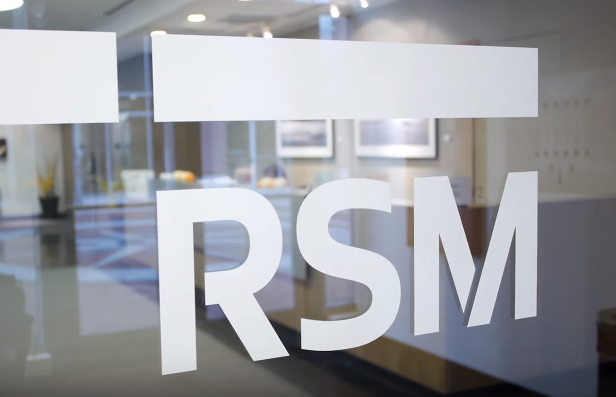From the April 2022 issue.
Having a somewhat “normal” tax season behind us certainly feels good. While it would be nice to have COVID behind us and the IRS caught up, these issues may be part of our “new normal.” Unfortunately, staffing issues also seem to be part of the new normal. At the same time, the pandemic period saw both a “great resignation” and a “great retirement” that left many of us with even more significant staffing issues.
Since I spend time consulting with CPA firms, industry accounting professionals, and providers of tools to accountants, I can learn about staffing pressures in each sector. It seems that all industries are having staffing issues, with increased demand on wages, possibly to counteract inflationary pressures. Further, while pandemic deaths may have created some labor availability issues, there are also skill shortages requiring reskilling. Additionally, entrepreneurs used this time to start new businesses, with record business creation in the U.S. in 2021. The net and short of it is that people are hard to come by everywhere.
Why the Labor Shortage?
More intelligent people than me are trying to answer that question. But a few things seem to be true. Many of those leaving the workforce have a root cause of working too much. Further, the value of family and friends has increased while social media has decreased genuine interactions.
Accountants typically worked very long hours at certain times of the year. The profession has converted to year-round operations, and there is little breathing time or margin. New generation accounting professionals have decided that is not the plan for them.
We went through a time of work-life balance discussions. The pandemic put that in a whole new light. For many, their home became their workplace for the first time. For others, there was no ability to disconnect from work at home. A significant number of professionals found themselves burning out for the first time with the additional load of PPP, PPP2, and educating children remotely. It was too much. However, working at home also demonstrated how individuals might not need a more extensive organization.
Since working from anywhere, anytime, became normal, globally recruiting labor was an option. Likewise, continuing to work from home, in a favorite place, a remote place, or multiple places became real. That meant we could work for anyone or ourselves. With my SpaceX Starlink dish, I can now work at high speeds anywhere in the country for about $99 per month. Why should I go to an office or a cubicle (some would say dungeon) when I could choose the beach, the mountains, or my pasture property in the country?
Additionally, it became apparent that it was not about how much was produced but how effective I was. Value pricing took on a whole new meaning when income covered everything desired in the lifestyle. If your firm is not offering at least a hybrid work environment, you might lose out on the best talent.
A certain amount of labor is needed for the product mix your firm provides. Where are you going to get that labor? Outsourcing? And what does that do to profitability and complexity? Further, providing higher-level advisory services requires professional skills beyond compliance, driving reskilling again!
Additionally, compliance work has never been more profitable for firms. So why should we change from a profitable, predictable lifestyle? As a result of profitable compliance engagements, most firms report record earnings for 2020 and 2021. I hope your firm was among them.
Will Automation Help?
Maybe, but probably not. While software tools, such as pre-accounting solutions like Dext, reduce work, automation cannot overcome the amount of labor needed. However, the capabilities of the products are improving. The accuracy is increasing. Speed is improving in hardware, communications, and throughput. Connections between systems are getting better, easier to implement, and more reliable with tools like Zapier and CData. In addition, underpinning technologies like artificial intelligence and machine learning provide developers and users alike leverage.
Operational issues like engagement letters are becoming easier with tools like:
- Amelio by HKMP Technologies
- Knuula
- Practice Ignition
- And engagement pricing – Bookgel integrates with BIZPAYO
Practice Management automation is also saving team members time with improved capabilities in
- Aero Workflow
- ATOM Software – Automated Tax Office Manager
- Avii
- Canopy Practice Management
- Clarity Practice Management
- Karbon
- Pascal Workflow
- Practice Relief – AccountantsWorld by IRIS
- TPS Clous Axis – TPS Time and Billing Software
- STAR Practice Management by IRIS
- Xero Practice Manager
Client interactions are changing for the better with products and services like
But even with the improvements in these supporting platforms, there is not enough time in the day to get everything done. Adages like “work smarter, not harder” and “If You Don’t Have Time to Do It Right, When Will You Have Time to Do It Over?” come to mind. We need a revolution in accounting professional labor, not an evolution!
What Does the Future Hold?
Another adage that I’ve written about in the past is “The best way to predict the future is to create it.” While the future is always uncertain, I believe the value of businesses is in their people. As early as 2018, McKinsey reported that automation and AI-based solutions would bring higher productivity, improved business performance, and a greater need for new skill sets by 2030. Reskilling will involve not only digital skills but also cognitive and emotional skills such as critical thinking and communication or, as McKinsey experts like to call it, “soft skills for a hard world.” This transition is already starting to happen. Are you helping your team get there?
Traditional firms and services will continue to exist. But, there will be a new generation of clients and accounting professionals who want something different than the traditional model. Can you create a firm where you would be excited to come to work every day? What does that mean to you, your firm, and your staff?
=======
Randy Johnston has been an entrepreneur, technologist, and teacher for most of his career. He has helped start and run many businesses, and founded Network Management Group, Inc. and owns half of K2 Enterprises. He has written for accounting and technology publications for four decades, and for CPA Practice Advisor since 2000.
Thanks for reading CPA Practice Advisor!
Subscribe Already registered? Log In
Need more information? Read the FAQs




